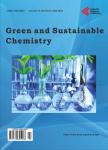Cu(II) Extraction in Ionic Liquids and Chlorinated Solvents: Temperature Effect
Cu(II) Extraction in Ionic Liquids and Chlorinated Solvents: Temperature Effect作者机构:不详
出 版 物:《Green and Sustainable Chemistry》 (绿色与可持续化学(英文))
年 卷 期:2011年第1卷第4期
页 面:155-164页
主 题:Chlorinated Solvents Liquid-Liquid Extraction Hydrophobic Ionic Liquids Lipophilic Polyamine Temperature Effect
摘 要:Room temperature ionic liquids have been currently used in liquid/liquid extraction processes in order to substitute conventional organic solvents. In this paper, a series of chlorinated solvents and 1-alkyl-3-me- thylimidazolium-based ionic liquids were selected to study the extraction efficiency of a lipophilic polya- mine 1,1,7,7-tetraethyl-4-tetradecyldiethylenetriamine (TE14DT) towards the model ion Cu(II) in such dif-ferent media. The effect of temperature on the extraction efficiency was also investigated. The metal ion par-tition was found to be strongly dependent on both the nature of the solvent and on the working temperature. The viscosity of ionic liquids and the water content in ionic liquid were found to affect the extraction effi-ciency of TE14DT. The chemical nature of the cation of ionic liquids, and in particular the alkyl chain length on imidazolium ring, also seemed to be important in determining the efficiency of the extraction process. Finally, preliminary experiments on back-extraction of Cu(II) ions from ionic liquid also revealed interesting hints to the development of a continuous transport process.



